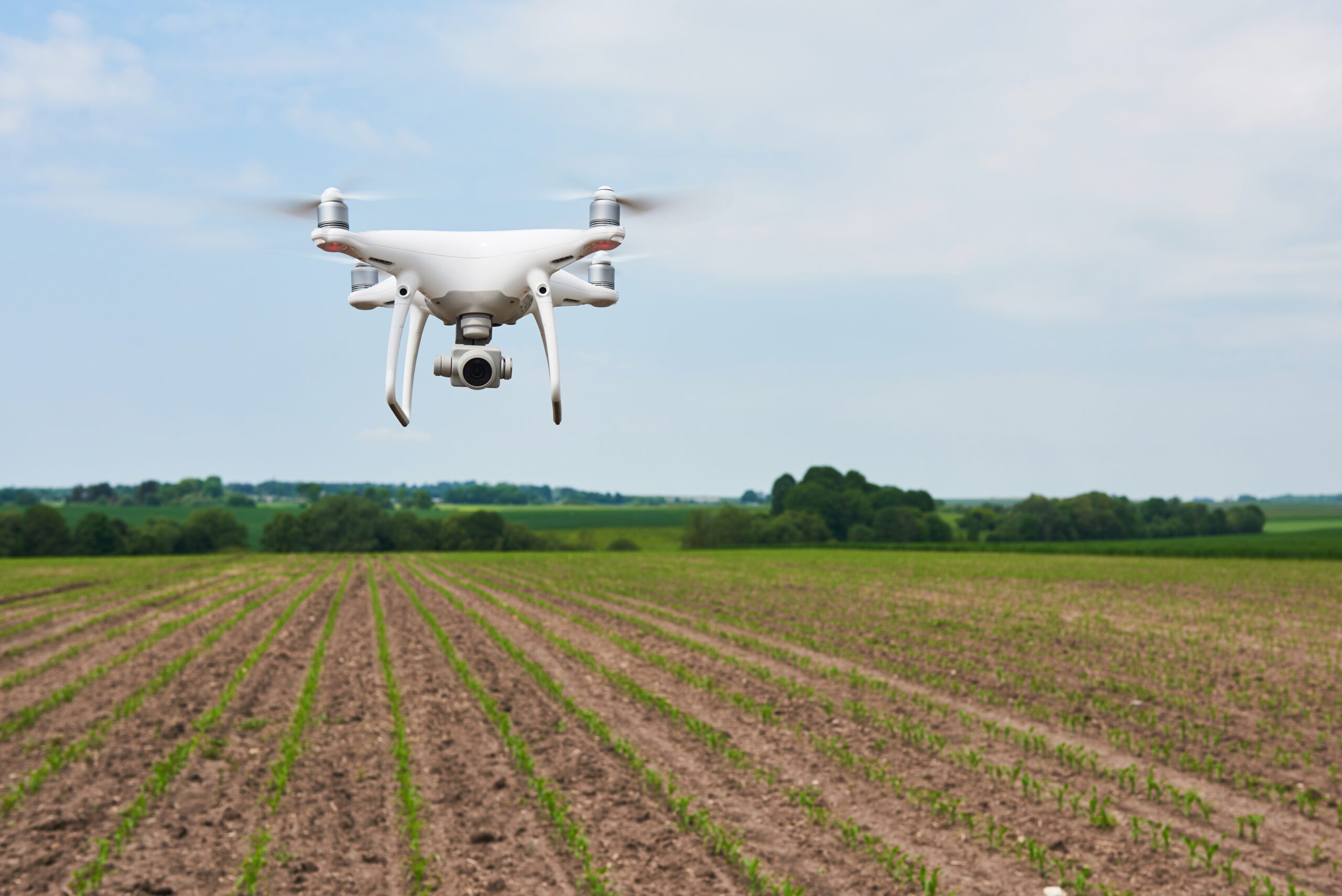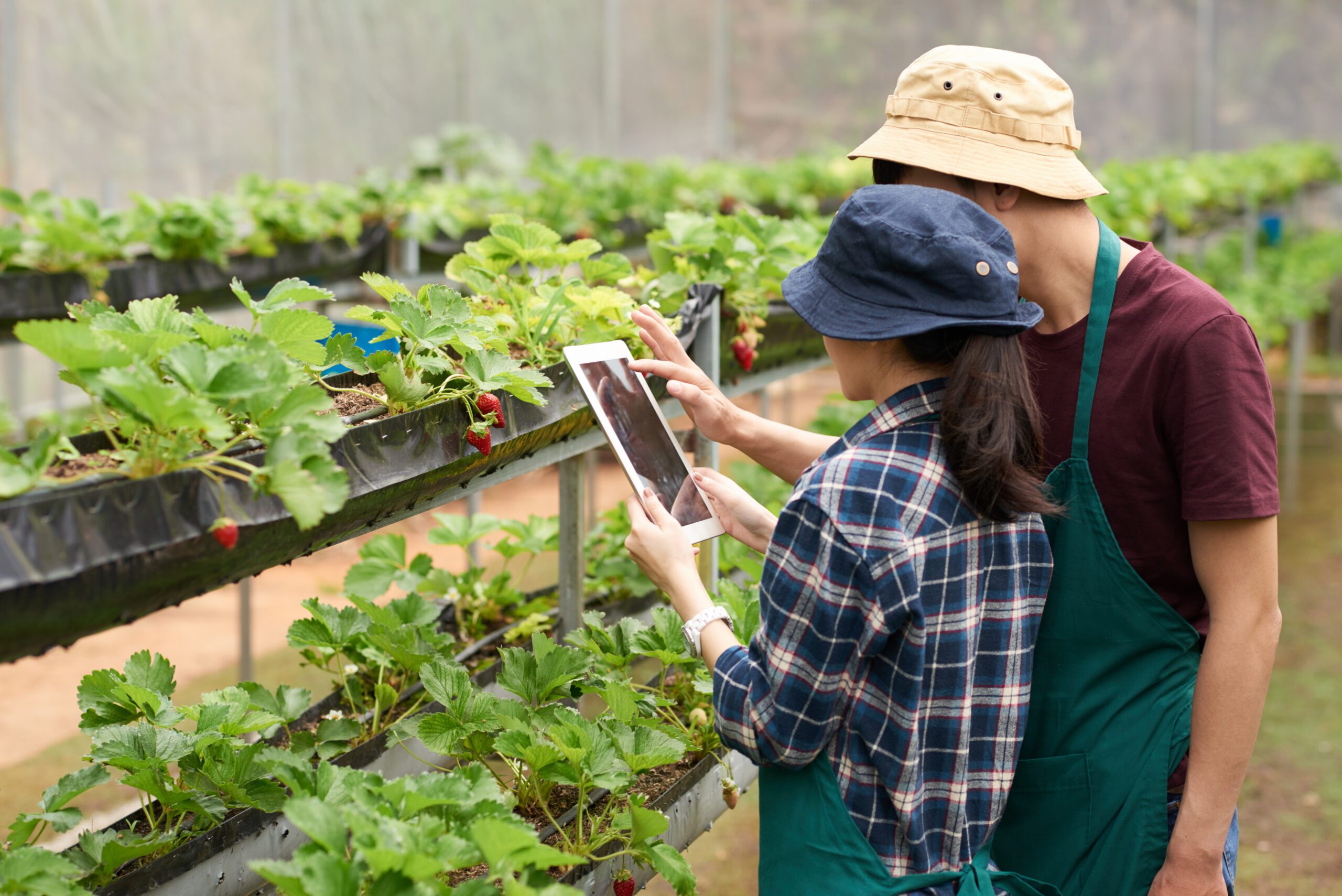There is no denying that technology has become one of the crucial aspects of business for every farmer, ag retailer, and agronomist. The increasing use of technology in agriculture is not a surprise to anyone, and has become near-necessary for success on-farm. Farming is highly labor-intensive. At present, farmers can use technology to enhance efficiency and manage costs. The evolution of digital technology and the modernization of agriculture have caused new concepts and terms to emerge. These include precision agriculture/farming, digital farming solutions, and smart farming. The terms are used interchangeably most of the times; however, each of these terms have subtle different meanings. In today’s blog, we will share the details of the differences between digital farming solutions, precision farming, and smart farming.

Precision Farming/Agriculture
Precision farming is also known as precision agriculture. The best way to understand this is it is the use of everything that makes the practice of farming more accurate, controlled, and optimized. A crucial element of precision farming is the use of information technology. It includes a wide array of elements, including:
- Automated hardware and software
- Autonomous vehicles
- Drones
- Robotics
- GPS guidance
- Sensors
- Telematics
- Soil mapping

The objective of precision farming is optimization. For instance, instead of applying the same amount of fertilizer throughout the complete field, precision agriculture helps in measuring the in-field variations and adapt the fertilizer strategies accordingly. Thus, it leads to optimized fertilizer use, saves costs, and reduces environmental impact. Precision farming was born with John Deere’s introduction of GPS guidance for tractors in the 1990s. The objective was to reduce errors and increase crop yield without wasting seeds. Adopting GPS guidance is so widespread that it is the most used example of precision farming today.
Precision farming has been around for more than 20 years, but it has become mainstream in the last ten years. This is due to technological advancements in agriculture and other industries. We’ve seen an increase in the adoption of smart devices, easier access to high-speed internet, and low-cost and reliable satellite communications for positioning and imagery. Having farm equipment optimized for precision farming is crucial for better results.
Digital Farming Solutions
The essence of digital farming solutions resides in creating value from the data received through precision farming. Digital farming means going beyond the available data and developing actionable intelligence and meaningful value from the data. Digital farming solutions include both the concepts of precision farming and smart farming. For the farmers, digital agriculture allows the opportunity to increase the farm’s production, save costs in the long term, and reduce the risks. Digital farming solutions are the future of the agricultural industry.
The Top 5 Digital Farming Solutions
1. IoT-Led Crop Management Software
Agricultural productivity depends on how well the farmers can manage the crops. Besides, not all the crops need the same type of care. Therefore, catering to the diverse requirements manually is not effective. Also, it becomes time-consuming and doing things manually increases the chances of errors. To streamline the process, IoT-led crop management software has been developed to cater to the specific needs of every crop. The software includes a control system for operating electrical equipment related to the crops, like water pumps, ventilation fans, solenoid valves, sunshades, etc. The system connects to sensors that measure air temperature, air-soil humidity, photosynthetic photon flux density, and water pH. Also, an automatic water control system allows the users to set water on/off timers according to the requirement of every plant.

2. Plant Disease Detection System
This is one of the most crucial digital farming solutions. Most farmers, especially those in rural areas, don’t have access to timely agricultural information like newly discovered plant diseases and predictions about rainfall, temperature, humidity, and wind speed. Thus, all these adversely affect crop production results. To address this, startups are using AI to detect diseases and pest attacks in plants at an early stage.
Thus, such use of AI prevents capital and crop losses. Plant detection includes farmers taking pictures of suspected diseased plants, and the Machine Learning-based system will offer a diagnosis. It also offers treatment options and the location of the closest agro-dealers. Moreover, when the disease or pests are detected in a district, the information becomes available to the farmers by dialing a short code. Also, farmers receive weather predictions that can help their farming strategies.
3. Automatic Crop Monitoring
Large-scale farmers grow a variety of crops over a huge area. Monitoring all the crops manually would need the farmers to walk the fields. This is hectic and cumbersome. Drones offer an alternative digital farming solution, but they are expensive and require a drone pilot. Therefore, startups are working on creating software that uses technologies like global satellites, remote sensing, and AI to identify crops and analyze their condition and yield.
The automatic crop monitoring satellite uses remote sensing and AI to identify and classify up to 10 crops, including cereals and pulses. The software will predict the hectares planted for them and forecasts the yields throughout any season. Also, it offers data on in-session declines associated with drought, frost and more at the paddock, farm, regional, state, and national scale.
4. Weed Detection Software
Herbicides represent a high percentage of agrochemical expenditures. However, much of it is wasted when farmers mistakenly spray them on non-targeted plants. Since herbicides are inherently toxic to the plants, it might have adverse effects even on the desired plants. To mitigate this issue, startups are developing solutions that detect weeds and signals when to open the nozzle spray. Therefore, it prevents the wastage of herbicides and saves valuable crops from getting damaged.
Within the weed detection software, the AI guides the camera installed in the wings of sprayers to determine the exact moment when every nozzle will be opened and closed. The software also includes modules that consist of a camera, a computer and individual electrovalves for every nozzle. Thus, it allows modification for every kind of sprayer and offers effective control during the application of herbicide.
Smart Farming
Smart farming is applying information and data technologies to optimize complicated farming systems. The focus is on access to data and how farmers can use the collected data intelligently. The objective is to increase the quality and quantity of the products while optimizing human labor. In simple terms, smart farming is about producing more food with lesser investment and the same amount of land.
The technology used in smart farming range from IoT and robotics to drones and AI. With these tools, the farmers monitor the field conditions without going to the field. Thus, they can decide on the whole farm or a specific piece of land. Smart farming is not just for large agricultural corporations.

It can also boost organic farms and other smaller farming operations. The complete process of smart farming is software-managed, and sensor monitored. Therefore, it reduces the overall prices, increases the overall yield, increases the quality of production, and ensures a better user experience. Automation has enabled giant steps forward in quality crop production, sustainability, and efficiency in farming.
Impact of Climate Change on Agriculture
Fluctuations in the ozone and greenhouse gases and climate change impact agriculture significantly because farming depends on weather conditions. Fluctuations in climate cause variations in habitat ranges and crop planting dates. Droughts and floods caused by climate change can impair farming operations. The temperature shifts can also affect the distribution of species and reduce the nutritional quality of cereals, livestock production, and crop yields.
Digital Agriculture Technologies Reduce Climate Change Vulnerabilities
Digital agriculture improves the farmers’ capacity to respond to weather conditions that are affected by climate changes through accurate climate forecasts. Temperature, wind, and precipitation are some weather parameters that the climate change affects. It is not easy to predict the future climate. Therefore, historical data is used to understand past climate behavior and predict future scenarios.
Digital farming solutions can reduce climate change vulnerabilities by predicting weather forecasts. Farmers can navigate the rainfall distribution and make better decisions about the different livelihood strategies, all thanks to the information distributed to the communities through radio and mobile communications.
Possible Problems with Progress – The Challenges Involved with Digital Farming Solutions
There is no doubt that the benefits of digital farming solutions are compelling, but it has met with significant challenges. For instance, difficulty using the software, data usage concerns, disparate data formats, and not being sure about the return on investment. Also, there is uncertainty on who will have access to the farmer’s data and what they are going to do with it. More progressive farmers are aware that proprietary data can fall into the wrong hands and be used against them.
Due to this, agribusiness has struggled to generate instant and tangible results from digital agriculture equipment and software. This has slowed the adoption of some of the best and most promising digital farming solutions. One of the most important issues is to gather standardizing data that, has made adoption difficult across the stakeholder groups. The challenge is farmers don’t trust anyone with their data right now. Thus, very little data moves from the sensors and the farm to the people that could significantly benefit from the data.
Data is only valuable if it is used in the right way. By itself, data is only valuable to an individual farmer. A trusted aggregation of data can create much wider value throughout the entire value chain. Secondly, data has no value if not translated into a business purpose. Farmers must be able to turn raw data into actionable information that helps them meet their business objectives.
This will only change when other parts of the agribusiness value chain – like the seed suppliers, put their own “skin in the game” and share the risks and profit of introducing new digital agricultural equipment on farms. Otherwise, the farmers will only focus on the potential risks of sharing data about their farms instead of looking at the opportunities. For instance, a farmer might suspect that a seed supplier could use the farmer’s data to raise the price of the seeds next year instead of helping the farmer to increase his/her yield.
To eliminate this distrust that currently prevents data gathering and harmonization, one option is to create a neutral data-sharing aggregator. It is a potential third party that can pool the data from all the individual farms to the benefit of all sides. However, whether such a party is formed, there is still the need to assure the farmers that the data is being used properly, and it will not be used to calibrate the commercial relationships at an individual level. A data-sharing aggregator will also help in addressing more long-term issues of sustainability and food security.
Digital Farming Solutions for a Better Working World
These are the hurdles that the agricultural industry will need to overcome in the next couple of years, but the benefits of digital farming solutions outweigh the drawbacks. They present huge opportunities to all agribusiness stakeholder groups for creating a more productive, flexible, and cost-efficient agricultural value chain.
The improvements in business performance create the best opportunity to feed the world sustainably. The gap between modern, advanced farming and subsistence farming is increasing at an alarming rate. The cost of implementing digital farming solutions has fallen substantially; the weak network infrastructure and limited capital of emerging economies mean that they are still a long way from benefitting from the digital agriculture revolution. But it also means that they have the most to gain.
More efficient farming methods should also push the prices down. Creating more abundant food supplies is not just about nutrition; it has the potential to be a tremendous economic liberator in developing markets. More sustainable digital farming solutions will lead to more productive and inclusive economies.
